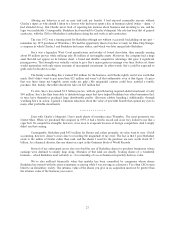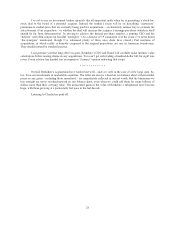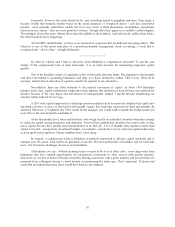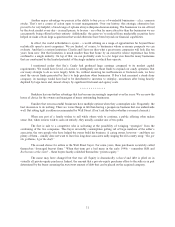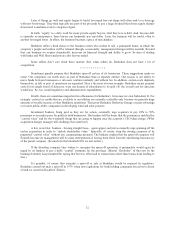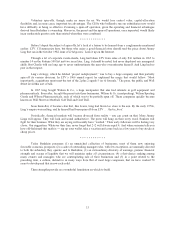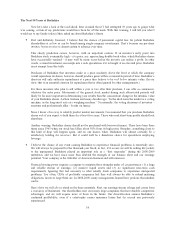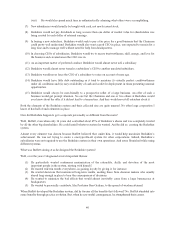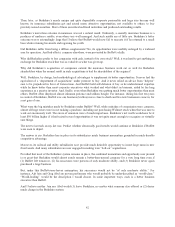Berkshire Hathaway 2014 Annual Report Download - page 35
Download and view the complete annual report
Please find page 35 of the 2014 Berkshire Hathaway annual report below. You can navigate through the pages in the report by either clicking on the pages listed below, or by using the keyword search tool below to find specific information within the annual report.Voluntary spin-offs, though, make no sense for us: We would lose control value, capital-allocation
flexibility and, in some cases, important tax advantages. The CEOs who brilliantly run our subsidiaries now would
have difficulty in being as effective if running a spun-off operation, given the operating and financial advantages
derived from Berkshire’s ownership. Moreover, the parent and the spun-off operations, once separated, would likely
incur moderately greater costs than existed when they were combined.
************
Before I depart the subject of spin-offs, let’s look at a lesson to be learned from a conglomerate mentioned
earlier: LTV. I’ll summarize here, but those who enjoy a good financial story should read the piece about Jimmy
Ling that ran in the October 1982 issue of D Magazine. Look it up on the Internet.
Through a lot of corporate razzle-dazzle, Ling had taken LTV from sales of only $36 million in 1965 to
number 14 on the Fortune 500 list just two years later. Ling, it should be noted, had never displayed any managerial
skills. But Charlie told me long ago to never underestimate the man who overestimates himself. And Ling had no
peer in that respect.
Ling’s strategy, which he labeled “project redeployment,” was to buy a large company and then partially
spin off its various divisions. In LTV’s 1966 annual report, he explained the magic that would follow: “Most
importantly, acquisitions must meet the test of the 2 plus 2 equals 5 (or 6) formula.” The press, the public and Wall
Street loved this sort of talk.
In 1967 Ling bought Wilson & Co., a huge meatpacker that also had interests in golf equipment and
pharmaceuticals. Soon after, he split the parent into three businesses, Wilson & Co. (meatpacking), Wilson Sporting
Goods and Wilson Pharmaceuticals, each of which was to be partially spun off. These companies quickly became
known on Wall Street as Meatball, Golf Ball and Goof Ball.
Soon thereafter, it became clear that, like Icarus, Ling had flown too close to the sun. By the early 1970s,
Ling’s empire was melting, and he himself had been spun off from LTV . . . that is, fired.
Periodically, financial markets will become divorced from reality – you can count on that. More Jimmy
Lings will appear. They will look and sound authoritative. The press will hang on their every word. Bankers will
fight for their business. What they are saying will recently have “worked.” Their early followers will be feeling very
clever. Our suggestion: Whatever their line, never forget that 2+2 will always equal 4. And when someone tells you
how old-fashioned that math is --- zip up your wallet, take a vacation and come back in a few years to buy stocks at
cheap prices.
************
Today Berkshire possesses (1) an unmatched collection of businesses, most of them now enjoying
favorable economic prospects; (2) a cadre of outstanding managers who, with few exceptions, are unusually devoted
to both the subsidiary they operate and to Berkshire; (3) an extraordinary diversity of earnings, premier financial
strength and oceans of liquidity that we will maintain under all circumstances; (4) a first-choice ranking among
many owners and managers who are contemplating sale of their businesses and (5) in a point related to the
preceding item, a culture, distinctive in many ways from that of most large companies, that we have worked 50
years to develop and that is now rock-solid.
These strengths provide us a wonderful foundation on which to build.
33






